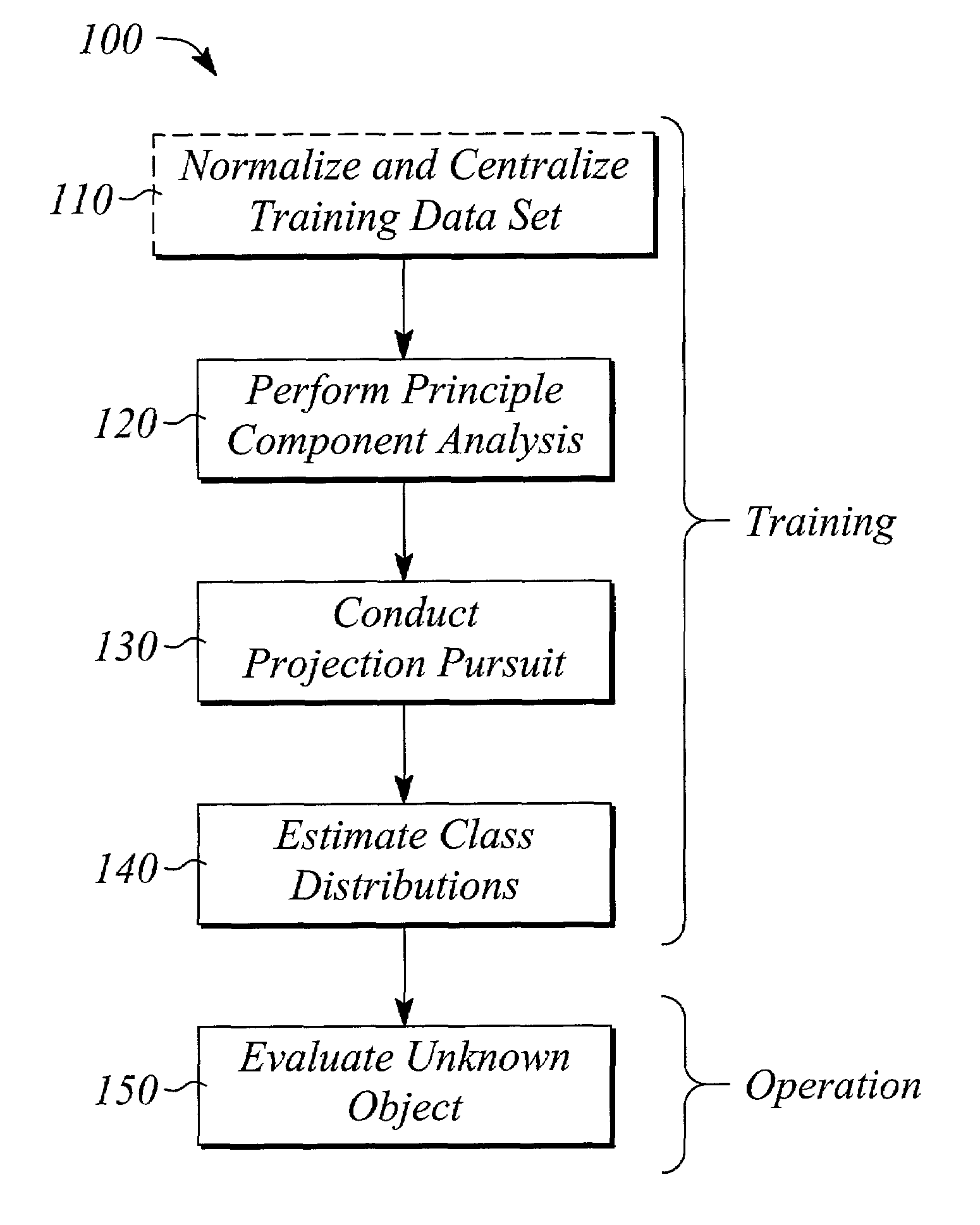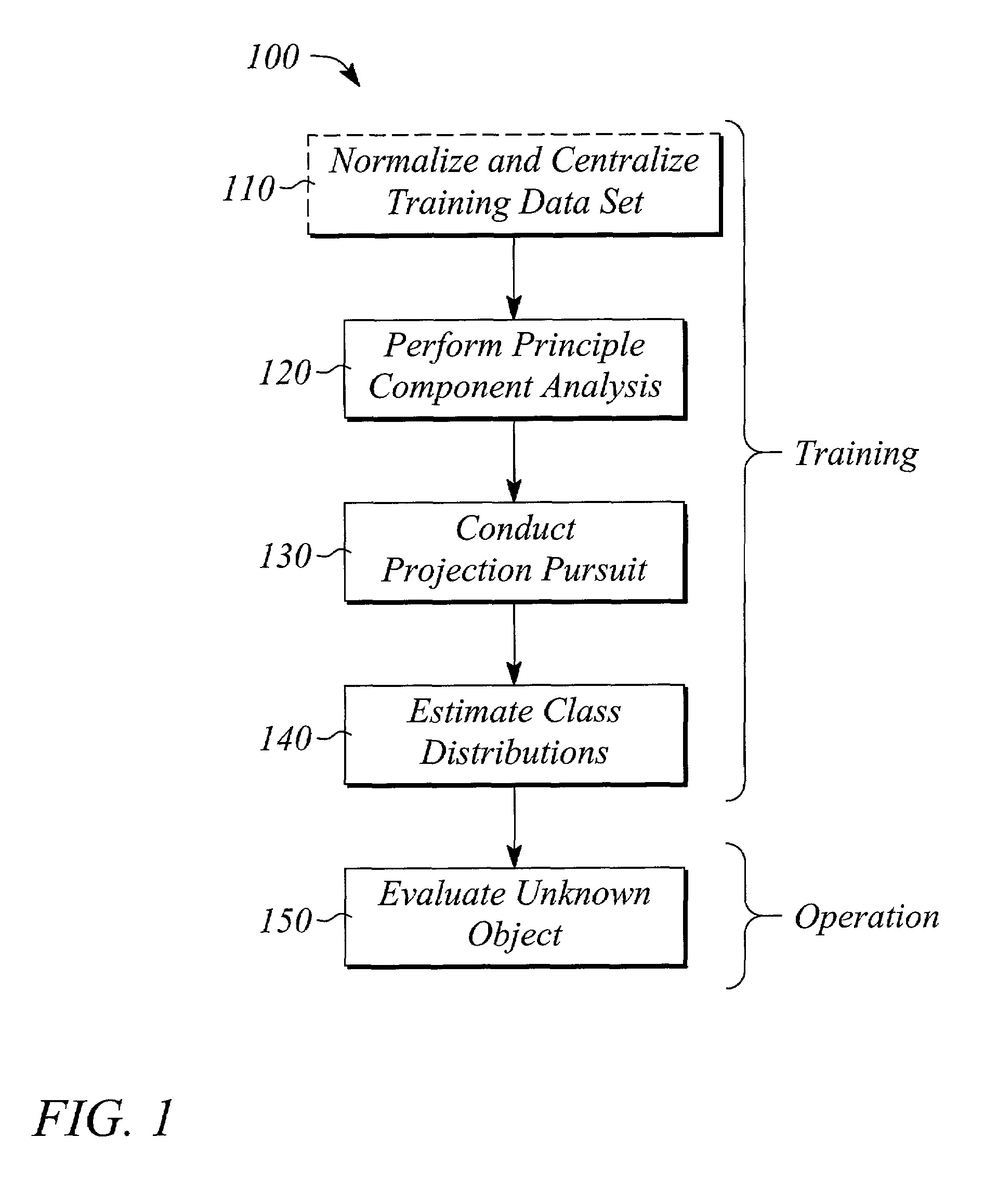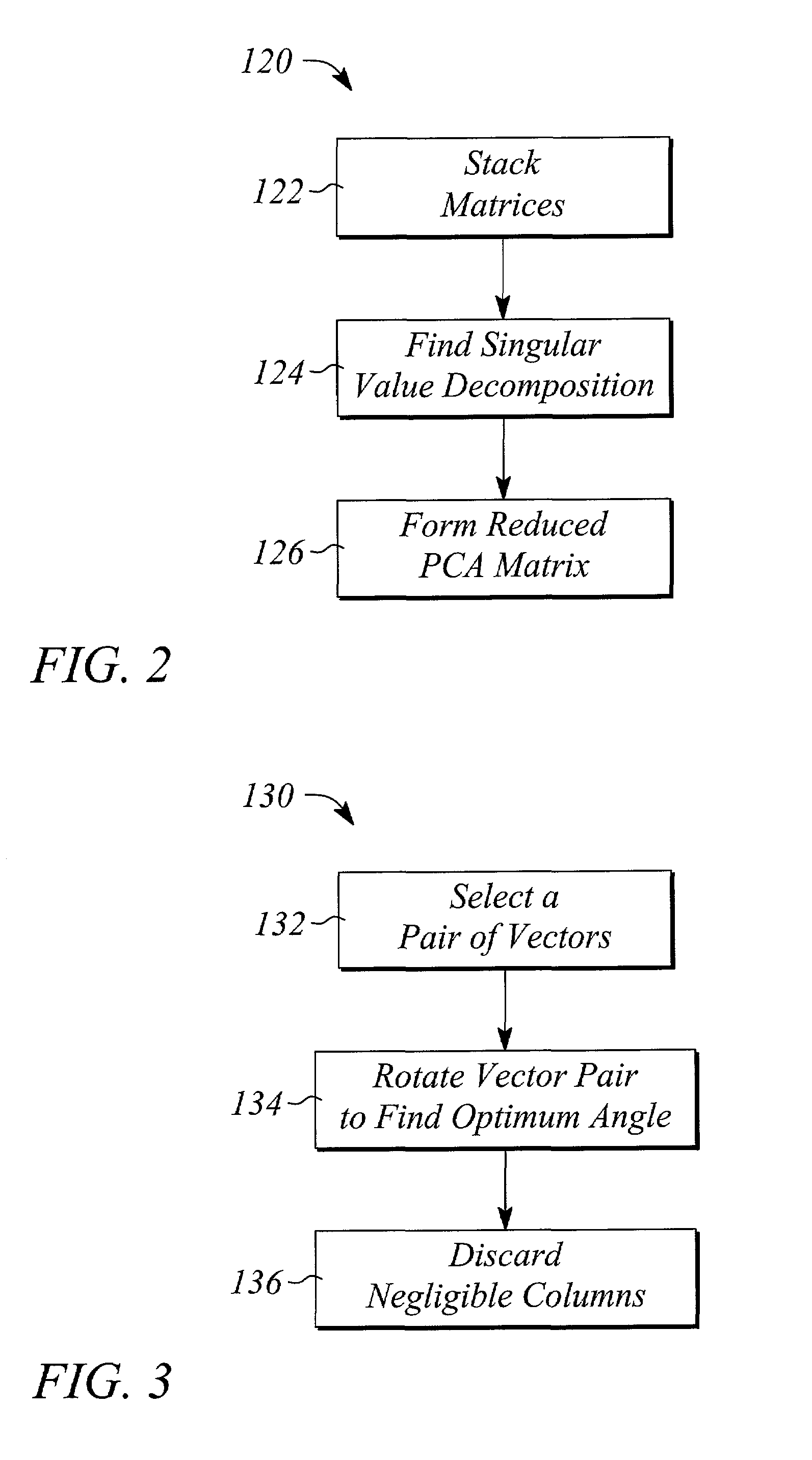Method and system of object classification employing dimension reduction
a multi-variate estimation and object technology, applied in the field of object classification using multi-variate estimation, can solve the problems of not being able not being able to identify objects, and failing to reliably perform single measurement, so as to improve the classification of unknown objects and reduce the dimensionality of multi-variate estimation problems
- Summary
- Abstract
- Description
- Claims
- Application Information
AI Technical Summary
Benefits of technology
Problems solved by technology
Method used
Image
Examples
Embodiment Construction
[0020]The present invention provides object classification or identification using multivariate estimation. In particular, a method of object classification of the present invention uses measurements of an unknown object and / or measurements extracted from an image of the unknown object. The measurements and linear combinations of the measurements are features of the object being classified. The features are used to classify the unknown object as being a member in one of several classes or categories of objects. The classes are defined by features in a training set developed by the method from measurements of known objects. A system of the present invention preferably implements the method. The method and system are useful in a wide range of applications, including but not limited to, computer vision, automated inspection systems, and related image processing.
[0021]The present invention employs a novel measurement or feature space dimension reduction. The method reduces the dimension...
PUM
 Login to View More
Login to View More Abstract
Description
Claims
Application Information
 Login to View More
Login to View More - R&D
- Intellectual Property
- Life Sciences
- Materials
- Tech Scout
- Unparalleled Data Quality
- Higher Quality Content
- 60% Fewer Hallucinations
Browse by: Latest US Patents, China's latest patents, Technical Efficacy Thesaurus, Application Domain, Technology Topic, Popular Technical Reports.
© 2025 PatSnap. All rights reserved.Legal|Privacy policy|Modern Slavery Act Transparency Statement|Sitemap|About US| Contact US: help@patsnap.com



